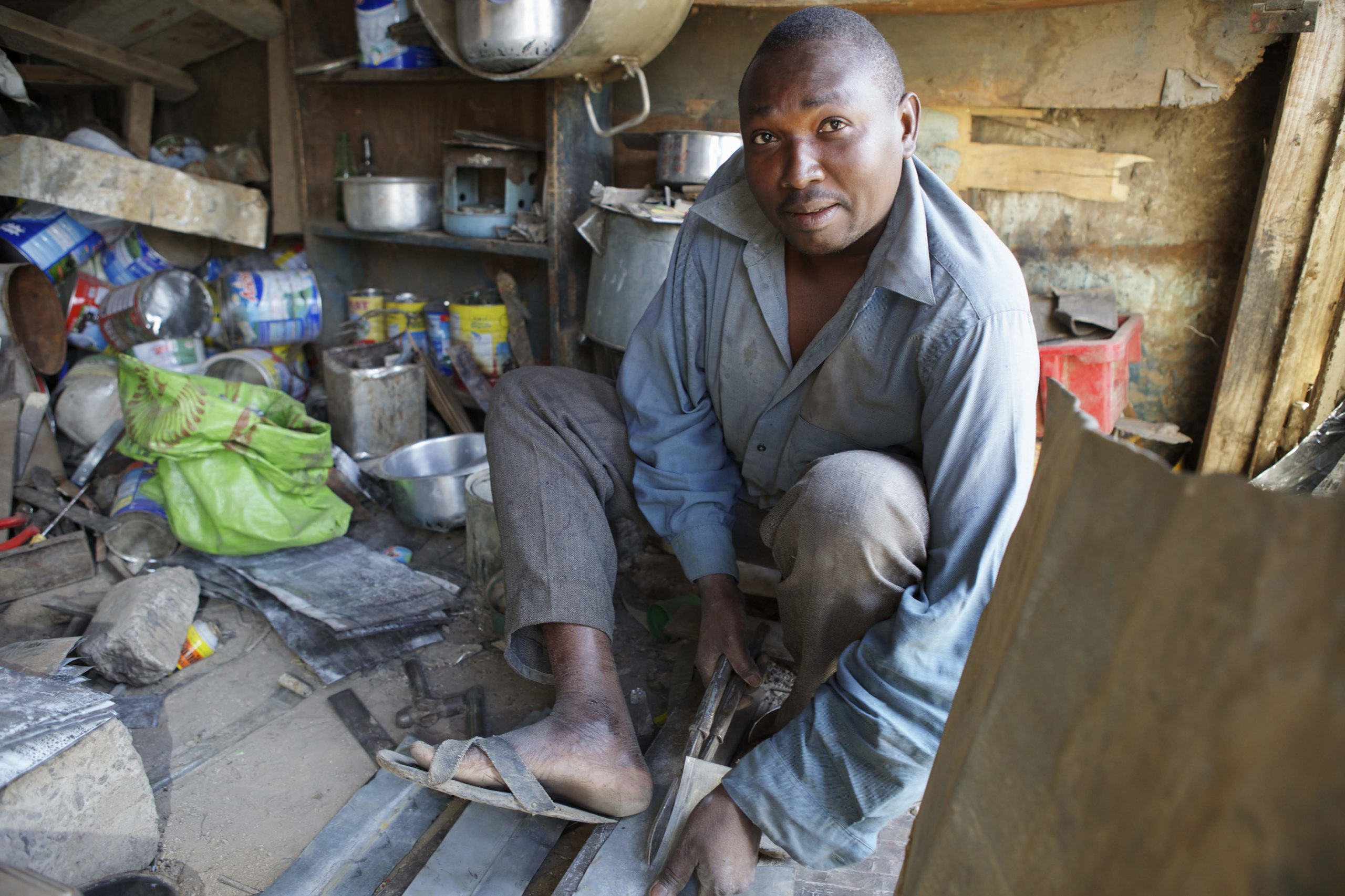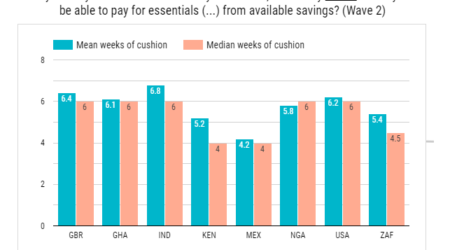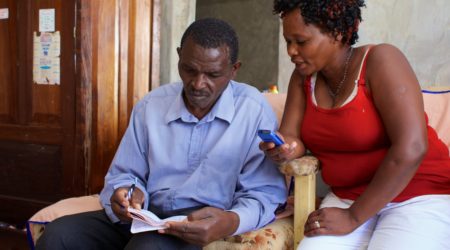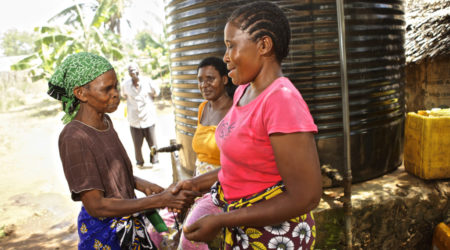Economic prospects for Kenya in the context of the COVID-19 crisis

Originally posted on the FSD Kenya Website, May 29, 2020
The infection rate of COVID-19 is as yet low in Kenya, but the economic consequences are already biting. Relief efforts are ongoing, but FSD Kenya is starting to look ahead to the recovery. For Kenya to have a robust and inclusive recovery, the recovery needs to include, or even be led by livelihoods of individuals actively earning incomes predominantly from an informal source. In previous research we have called this group of people cuspers – i.e. people on the cusp of escaping poverty but still at risk of falling back into it. Therefore, FSD Kenya has asked the question: How can finance promote the recovery of real sector livelihoods of Kenyan ‘cuspers’ following the immediate COVID-19 crisis?
In order to answer the question, FSD Kenya, FSD Africa and BFA Global took a scenarios approach; not forecasts or predictions, but plausible stories, based on data, about how the future might unfold. This analysis reminded us that cuspers have differentiated needs, and that women may be especially vulnerable. In all scenarios, digitization will increase, but efforts are needed to ensure that the benefits are widely spread.
Macroeconomic trajectories
COVID-19 has created an environment of high uncertainty, unclear and unfamiliar risks, and an unprecedented global shock that has crippled key economic centres across the world. FSD Kenya, FSD Africa and BFA Global conducted a three-week agile scenario process to create the different worlds that Kenya faces based on three macroeconomic trajectories for the country.

The first is a relatively short V-shaped bounceback in which growth resumes in late 2020 with reasonable growth levels by mid- 2021. The second is a longer and more debilitating U-shaped limpback in which recovery is slower, with 2019 growth rates likely only reached by 2023; and finally more fundamental fallback in which there is long-lasting harm to the economic structure, any upticks are not sustained and a new lower level of economic activity endures beyond 2023. However, GDP growth is an aggregate measure, and conceals great divergences of economic experience, even within Kenya itself.
Cuspers
Because of the differentiated impact of COVID-19, we adopted the lens of a large group of Kenyans dubbed ‘cuspers’ who we define as low and moderate income working Kenyans, largely in in the informal sector, who operate outside the easy reach of formal transfers or funding. A 2015 study using a narrower income-based definition found that almost a third of Kenyans fit into this category; with our broader lens, it is possible that 69% of adults in 2019 can be found into this large group. There are three reasons that inform the focus on cuspers:
- Cuspers are generally more vulnerable to the crisis than wealthier groups because they started with generally low levels of financial health, their incomes have been affected by the pandemic restrictions—drastically so in some cases—and their informality means that they are not in easy sight of state welfare or even formal sector finance solutions.
- Cuspers are already in distress: A BFA online survey (April 2020) found that 79- 81% of low and moderate income Kenyans reported income somewhat or significantly reduced as a result of COVID-19. Further, conventional coping strategies to survive shocks such as increasing income through casual work, and receiving remittances from friends and family have been reduced.
- Cuspers are the engine room of an inclusive economic recovery, because they are of working age, support dependents and without their livelihood strategies, the poverty gap could grow and inequality increase. Indeed, a bounceback driven by the recovery of the formal sector alone risks squeezing this group into welfare dependency.
Bear in mind that while the scenario process focused on cuspers, FSD Kenya is actively engaged in cash transfer interventions for the most vulnerable.
Detailed cusper scenarios
Using the cusper lens, we considered their experiences and the three worlds that could emerge depending on the country’s macroeconomic trajectory
- Bounceback: We found it difficult to envision a world in which cuspers participated in the bounce back, partly because the experience of recovery will differ according to formality, livelihood sector and the extent to which livelihoods are positively affected by government policy and stimulus. Given these factors, it is conceivable that large parts of the Kenyan formal sector may experience a ‘bounceback’ linked not only from being targets of government stimulus and liquidity, but also because the informal sector has suffered aggressive and often ad hoc anti-business restrictions linked to COVID-19. These restrictions could lead to a reduction in the survival of and competition from informal firms, thereby enhancing formal firms’ market share and power in key sectors. In this scenario, the size of the informal sector would be squeezed, and the growth of formal employment would be unable absorb the much larger number of displaced cuspers. The danger under all the scenarios, but particularly in a rapid bounceback, is that the productive cusper middle layer of the economy is thinned.
- Limpback: In a slower limp back macro-scenario, it is possible the prospects of cuspers would be affected differently by their source of livelihood, in terms of the sectoral impact of COVID-19 and prospects for sectoral recovery. For example, cuspers whose predominant source of livelihood is linked to the leisure/business tourism sector will be more deeply impacted with lower prospects of recovery than cuspers earning a living in certain agricultural value chains (such as horticulture) or delivery services. Bear in mind that the adaptable nature of cuspers means they would likely shift to sectors with brighter business prospects. However, given lagging demand, their relative inexperience and networks in the new sector, high competition and market saturation, it is unlikely that the ‘winning’ sectors would be able to absorb all cuspers. This scenario could provide more time to take advantage of the crisis to reset policies and institutions to provide relevant relief and stimulus targeting cuspers as well as address structural issues in the informal sector, leading to a more inclusive future growth trajectory for the country.
- Fallback: A fall back macro scenario could happen if COVID-19 leads to a severe attrition of the informal sector as there is less demand for goods and services in the economy, and many people who sought refuge in the rural areas during the crisis find they do not have the means or opportunity to return to urban activities, further depressing wages and productivity. In this scenario, households have drawn down on their saving, depleted their assets and exhausted their credit, making recovery difficult without a stimulus. The formal sector proves too small to support the needs of the increased group of welfare recipients. As a result, the formal sector exists mainly in enclaves surrounded by increasingly desperate survivalist enterprises in which urbanisation trends are slowed or reversed. There is the risk of long lasting economic and social damage as the cuspers struggle to recover.
Gendered impact of COVID-19
An additional insight that emerged during this process is how women are being disproportionately negatively affected by COVID-19 as detailed below:

Implications for COVID-19 responses
- Cuspers are resilient but need support: While cuspers may be especially vulnerable at this time, their ability to stay afloat in very difficult circumstances may create a ‘mirage of resilience’ that conceals deep deteriorations in economic well-being, financial health and actual ability to truly recover. The inherent fluidity of cusper life can make them difficult to target using conventional approaches deployed via government and the formal financial sector. This makes it more important to employ creative mechanisms to target a segment that can be ‘invisiblised’ using conventional methods.
- Cuspers have differentiated needs: The potential for cuspers to recover is not uniform across sectors and thus sub-segmentation by source of livelihood is important when determining interventions with regard to financial and non-financial responses. Cuspers active in sectors deeply affected by COVID-19 with poor prospects of recovery will need different support to cuspers active in more resilient sectors.
- Interventions are needed that will support the growth of productivity in the informal sector: Informal enterprises, which are more often run by women, will also need stimulus to return to work in most scenarios; the crisis could be an opportunity to increase productivity, profitability, job quality and income security. These could be in the form of offering bounceback loans through the supply chain and community financial institutions, decreasing the burden of bureaucracy and corruption, and taking advantage of Kenya’s already-high digital activity to increase trust and reliability in the economy.
- Digitisation will accelerate but its effects will be uneven for cuspers: Kenya started the crisis more digitally connected than many peer nations. COVID-19 has provided impetus to accelerate digitisation buoyed by government action to increase limits and waive fees on low value transactions. While these may quicken shifts to digital payments, or towards digital commerce along value chains, it may deepen digital exclusion. The use of digital payment systems, and onboarding/ use of digital commerce platforms carry costs linked to electronic devices and internet access for example. Accelerated digitisation may be as likely to displace some cusper livelihoods as offer others a new lifeline.
- Monitor the evolving situation: Finally, scenarios are not predictions but rather unfolding stories. It is necessary to build indicator sets which track trajectories over time which could include MSME data, sub-national measures of economic activity, and gender disaggregated data. FSD Kenya has a site that is tracking the impacts of COVID-19 on the Kenyan economy.
[2] https://fsdkenya.org/publication/finaccess2019/
[3] http://www.kenyalandalliance.or.ke/women-land-property-rights/
Anzetse Were is Economist at FSD Kenya. Twitter: @Anzetse
Amolo Ng’weno is CEO of BFA Global. Twitter: @AmoloNgweno
CITATION: Ng’weno, A., & Were, A. (2020). Economic prospects for Kenya in the context of the COVID-19 crisis. Nairobi. FSD Kenya.



